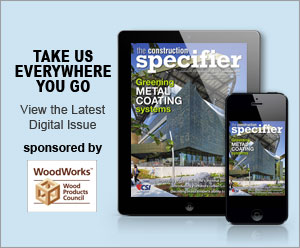|
|
| Form + Function |
|
Sustainability and wellness for the American Society of Interior Designers
The American Society of Interior Designers (ASID) headquarters in Washington, D.C., has become the first space to be certified to Platinum under both WELL and the U.S. Green Building Council’s (USGBC’s) Leadership in Energy and Environmental Design (LEED). The space reflects the sustainability goals of LEED along with the health-focused targets of WELL, and was inspected by WELL experts for performance related to the categories of air, water, nourishment, light, fitness, comfort, and mind.
“We began this project with a clear goal of showcasing the many ways design can positively affect the health and well-being of employees while boosting resource efficiency,” said Randy W. Fiser, the organization’s CEO. “At ASID, we believe in research-based results in design and, placed an emphasis on third-party validation of the space.” Find out what building assemblies and strategies were used to achieve the certification.
» Read more
|
|
| Column |
| The future is now: Young professionals at CONSTRUCT |

|
| Millennials will represent 75 percent of our workforce by 2025—only 7.5 years from now. This is important because the industry has never experienced a generational imbalance of this magnitude. It is also important because this group of professionals will be asked to step into advanced roles and responsibilities far earlier than ever before in the history of architecture, engineering, and construction (AEC). Three years ago, CSI member Cherise Lakeside saw a need and an opportunity at CONSTRUCT. |
| Hence, YP Day was born. Find out what is happening in Providence today and learn why it can be important for you—and the entire industry. |
| » Read more |
|
|
|
|

|
| Top Trending Articles |
| Selecting HVAC for critical environments |
| Cleanrooms present unique design challenges because they must meet specific requirements that go beyond what is encountered in a typical commercial space. When specifying HVAC equipment in a critical environment such as a cleanroom, engineers must consider the key issues of air filtration, humidity control, and pressurization. While a specifying engineer may have experience with these issues in the context of a traditional commercial application, the considerations are substantially different in a cleanroom. |
| » Read more |
|
| Filling in the gaps for privacy in restrooms |
| Changing social attitudes have prompted a nationwide trend toward gender-neutral and high-privacy restrooms in the United States, particularly for use in universities and commercial office facilities. At the same time, individuals with caregivers of the opposite gender have long requested restrooms that cater to all genders. Those who suffer from chronic health issues may also consider privacy a non-negotiable issue. Across demographics, restroom privacy is increasingly being seen as an amenity, for civil liberties, health, and personal reasons. As demand continues to build, architects and specifiers face new design challenges and considerations—for toilet partition design in particular. With each design challenge comes careful examination of the occupant experience, as well as aesthetics, durability, building codes, fire codes, and Americans with Disabilities Act (ADA) regulations. |
| » Read more |
|
|
|
|
|
|